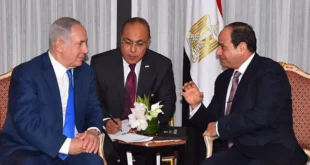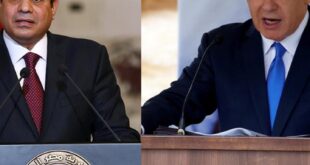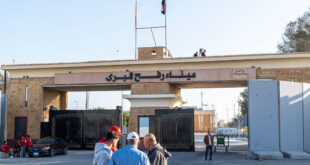The war in Ethiopia’s Tigray region just took an unexpected turn. Seemingly isolated in mountainous reaches of central Tigray only weeks ago, Tigrayan rebels last week overran regional capital Mekelle and other cities and towns they had left last November when federal troops moved in. They were met by dancing and cheering crowds. Ethiopian Prime Minister Abiy Ahmed, who had promised a short clash in Tigray and declared victory late last year, pulled federal forces back after a run of battlefield defeats. It’s a stunning turnabout in a brutal war.
So, is the fighting over? Sadly, probably not. If Abiy and Tigrayan leaders can somehow reach agreement on a ceasefire and getting urgently needed aid into Tigray, that would calm things down. More likely is that the war enters a new phase, one that carries even graver danger of triggering a wider crisis in the Horn of Africa.
Just a couple of years ago, things looked different for Ethiopia and the region. Abiy came to power in 2018 on the back of mass protests spearheaded by two of the country’s biggest ethnic groups, his own Oromo and the Amhara. He promised more inclusive politics that would turn the page on decades of repression. A revolution in neighbouring Sudan appeared to surmount even steeper odds. Months of dogged demonstrations prompted the Sudanese military to oust Omar al-Bashir, who had held power for almost 30 years. After arresting Bashir, security chiefs tried to stamp out the protests. But reinvigorated demonstrations and concerted foreign pressure, particularly after a massacre of over 100 protesters in Khartoum, forced them to share power with civilians in a transitional government led by former UN official Abdalla Hamdok.
Abiy and Hamdok got along well at first. Shortly after coming to power, Abiy had visited Sudan, helping broker the deal that saw Hamdok become premier. Ethiopian leaders, notably long-serving ruler Meles Zenawi (who died in 2012), had long wooed Sudan, hoping to curb Sudanese resistance to the mighty dam Ethiopia planned to build on the Nile. Sudan, together with Egypt, feared that without an accord on how the dam would work, it would create water shortages downstream. Khartoum did recognise benefits the project could bring, including more electricity, irrigation and flood control. Meles’ diplomacy with Bashir helped soften Sudan’s reservations. But the Nile waters dispute had remained an intermittent source of friction, particularly as Khartoum had to balance relations with Cairo – which was more fiercely opposed to the dam – and Addis Ababa. The Abiy-Hamdok rapport seemed to cement better ties between the two countries.
Abiy’s early flurry of regional diplomacy also brought dramatic change to Ethiopia’s relations with Eritrea. In 2018, Abiy signed what seemed back then to be a historic peace deal with Eritrean President Isaias Afwerki, putting aside these two countries’ longstanding enmity. Abiy won the Nobel peace prize in large part thanks to his pact with Isaias.
” Momentous changes … suggested that a brighter future might be on the cards. Two years on, things have taken a darker turn. “
All in all, things seemed to be looking up. To be sure, there was still plenty of trouble in the region. Somalia was embroiled in a protracted crisis amid bitter tensions between President Mohamed Abdullahi Mohamed “Farmajo” and his rivals. South Sudanese leaders had signed a peace deal but remained bitterly at odds and violence continued to wrack much of the country. Hostility among Gulf Arab powers was spilling into the region. The Horn still hosted more UN peacekeepers than anywhere else in the world and had among the highest numbers of displaced. But the momentous changes in Ethiopia and Sudan – seemingly promising transitions away from authoritarian rule in two vital countries – suggested that a brighter future might be on the cards.
Two years on, things have taken a darker turn.
Sudan’s transition is stuttering. Khartoum signed a peace deal last year with some rebels, paving the way for representatives of battle-scarred peripheries to join the government (see Crisis Group’s paper on the deal). But its economy is in dire straits. Grievances that brought people into the streets two years ago – declining living conditions, spiralling inflation and shortages of bread, water and electricity – still fester. Many Sudanese blame Hamdok. Military leaders jostling with their civilian rivals arguably have the upper hand. Factions in the security forces are also feuding among themselves.
If Sudan’s transition has hit bumpy ground, Ethiopia’s has gone off the rails. Resurgent ethno-nationalism threatens to tear the country apart. Abiy’s new ruling party is expected to win a recent vote convincingly – the authorities have not yet announced complete results – but violence shut down polling in about a fifth of the country’s constituencies. In Oromia, Ethiopia’s most populous state, the opposition boycotted, crying foul. Oromo rebels have been stepping up operations. Ethnic violence plagues several other corners of the country.
Worst of all has been the Tigray war (again see our recent report). Eight months ago, Abiy pledged a quick law enforcement operation to oust the Tigray People’s Liberation Front (TPLF) from Mekelle. The TPLF – Meles’ party – had dominated Ethiopia’s politics for decades until the protests that brought Abiy to power downsized its national role. Tigrayan leaders and Abiy quickly fell out, with Abiy claiming that the TPLF was obstructing reforms and Tigrayans accusing the new premier of using the state’s legal authority to settle scores. A dispute over the constitutionality of a COVID-19-related election delay escalated. In November 2020, Tigrayan forces, claiming to be pre-empting a federal invasion of Tigray, overran a federal military base in the region. Abiy then sent in the Ethiopian army.
At first, things went Abiy’s way. As federal forces, apparently supported by a drone campaign, rolled into Tigray, the TPLF pulled out of Mekelle and other towns. Paramilitaries and militiamen from the Amhara region, just south of Tigray, surged into territory in western Tigray that the Amhara claimed the TPLF had stolen from them three decades ago. Tens of thousands of Eritrean troops also entered the fray. Isaias, with whose forces the TPLF-led Ethiopian government in the late 1990s fought a bitter and bloody two-year border war, hoped to deal his old Tigrayan foes a lethal blow.
” The UN estimates that hundreds of thousands are already in famine conditions. “
The war saw horrific suffering. All sides stand accused of atrocities. Eritreans’ scorched-earth tactics, with credible reports of massacres, rapes, looting and crop burning, have been especially cruel, casting Abiy’s 2019 peace deal with Isaias in a much less flattering light. The tactics fuelled rage among Tigrayans and support for the TPLF, which was pivotal to Tigrayan forces’ later advances. Humanitarian agencies say Eritrean and Ethiopian troops blocked aid destined for rebel-held areas. The UN estimates that hundreds of thousands are already in famine conditions. Millions more are short on essential supplies.
If that wasn’t bad enough, Ethiopia-Sudan relations are on the rocks. Sudan’s military leaders, who have close ties to Egypt, have always viewed Abiy more warily than their civilian counterparts. But even Hamdok chafes at how dismissive Addis Ababa has been of Sudanese anxiety about the dam, notably around the transparency of safety standards and reservoir filling. Khartoum wants to be sure the Ethiopian project won’t leave Sudan thirsty or harm its own dams and turbines.
With Ethiopian troops busy in Tigray, Khartoum seized the fertile agricultural border region of al-Fashaga, ignoring a relatively amicable land-use arrangement Meles and Bashir had forged and that had governed the area for more than a decade (our briefing last month covers the crisis). Sudanese forces evicted thousands of Ethiopian – mainly Amhara – farmers. Ethiopia sent in its own troops, along with Amhara militias, resulting in skirmishes with the Sudanese. Sudan’s army has dug in. The two sides face each other in a tense standoff across front lines adjacent to the western Tigray flashpoint.
Domestic politics on both sides complicate things. By upsetting the peaceful status quo in al-Fashaga, the Sudanese partly hope to strengthen their hand in the Nile waters dispute and perhaps buttress the ailing Sudanese economy. But security chiefs also see their offensive, which many Sudanese cheer on, as a way to burnish their popular credentials. As for Abiy, any sense he is soft on Sudan could rile the Amhara, a key support base within his ruling party.
So, does the dramatic reversal of fortunes in Tigray change things? That depends on what happens next.
Abiy himself has put a brave face on the Ethiopian army’s rout. He claims that he pulled out troops having achieved his main war aims, though the TPLF’s return to power in Mekelle and Tigrayan forces’ parading thousands of federal army prisoners of war through the streets make that hard to believe. Abiy has also declared what he calls a humanitarian ceasefire. But the federal government still appears to have the region in a stranglehold, denying Tigray electricity, telecommunications services and banking, and doing little to support ramped up aid shipments to the stricken population. The UN has pointed to Amhara militiamen as the probable culprits in the destruction of a bridge along a key thoroughfare into Tigray, which further hinders access (Addis Ababa denies the charge and blames the TPLF). If Abiy’s pending election win could, in principle, empower him to be more magnanimous, his standing will undoubtedly take a hit from defeat in a war that, for all its horrors, has been popular among Ethiopians outside Tigray. Reports of security forces rounding up Tigrayans elsewhere in the country hardly suggest his government is leaning toward compromise.
” A resurgent Tigray could put the Eritrean dictator on the back foot again. “
As for Eritrea, Isaias has pulled back his forces to northern Tigray. The Eritrea-Ethiopia border is disputed, but Eritrean troops are still farther south of areas Asmara claims (and which an international tribunal ruled in 2002 are Eritrean). Isaias himself is in an interesting spot. Only a few years ago, he was isolated in the region, subject to harsh UN and Western sanctions. The ostracism owed mostly to his support for Islamist militants in Somalia, but Meles’ lobbying and U.S. hostility to Asmara contributed, too. Abiy had brought, at least until now, a sharp reversal in Isaias’ fortunes. Not only did ties with Ethiopia improve, but he also drew closer to Somali President Farmajo. The three countries formed a “tripartite alliance” that Isaias has touted as an alternative to the existing regional bloc, the Intergovernmental Authority for Development, which he saw as Meles’ creature (in reality, with Abiy and Farmajo consumed by domestic crises, the new alliance has done little concrete). Isaias has also adroitly cultivated relations in the Gulf. A resurgent Tigray could put the Eritrean dictator on the back foot again.
Tigray’s leaders have reacted to Abiy’s ceasefire declaration with conditions for their own. These include Eritrean and Amhara forces’ withdrawal from Tigray and a credible probe into war crimes. A Tigrayan spokesman has also said Tigray forces will chase the Eritreans across the border, though TPLF leader Debretsion Gebremichael afterward played down that threat. More likely is that the Tigrayans concentrate first on areas held by the Amhara in western Tigray. Tigrayan forces appear to be gearing up for an offensive, which will likely run into fierce resistance and could be particularly bloody. Beyond recapturing land the Tigrayans view as theirs, the operation would put Abiy in a bind, testing his relations with the Amhara if they believe he hasn’t done enough to protect them. Moving west could have the added benefit, in Tigrayan eyes, of opening supply lines to Sudan – all the more important if Addis and the Eritreans continue to block aid deliveries.
That brings us back to Sudan. If Tigrayan forces get to the border, it would be hard to argue against Khartoum opening it up, given the terrible conditions in Tigray. But Sudan’s motives may go beyond the humanitarian. There is a risk that Sudanese military leaders, maybe with a nudge from Cairo, see backing the Tigrayans as a way to ratchet up pressure on Abiy as leverage in the dam dispute. Already Ethiopian authorities allege – and UN officials and diplomats in the region confirm– that the Sudanese military is supporting anti-government militias elsewhere in Ethiopia, while Sudanese officials say Ethiopia is backing rebels in Sudan. Leaders in Addis Ababa or Khartoum don’t want a wider fight between their two countries. But they’re headed down a path – especially in interlinking the Nile waters, al-Fashaga and potentially Tigray disputes – that takes them in precisely that direction. It’s easy to see how things heat up from here.
All sides could take steps to dial things back. Getting vital aid into Tigray requires that Addis Ababa resume basic cooperation with Mekelle and that Tigrayan leaders focus on preventing famine rather than new offensives. Beyond Tigray, Abiy almost certainly needs some form of wider national dialogue to bridge the divisions that threaten to pull the country apart. The fix for al-Fashaga would be for Sudan to readmit Ethiopian farmers and restore the soft-border arrangement that worked just fine for years. With Ethiopia now filling its dam’s enormous reservoirs, it should be readier to share information on a project that will have huge impact on its downstream neighbours, while all three parties to the Nile dispute should pursue a longer-term settlement on the dam’s coordinated management.
For now, though, a belligerent mood prevails. Nobody appears to see the dramatic turn of events in Tigray as a moment for pause. Reviving the optimism of a few years ago in the Horn would be a tall order, especially given Ethiopia’s turbulence. Fundamental changes are afoot, as the pillars of regional order partly orchestrated by Meles – a strong and influential Ethiopia, an Ethiopia-Sudan détente and a boxed-in Eritrea – crumble. As yet it’s far from clear what will replace them. The imperative is to avoid a wider war in figuring that out.
 Eurasia Press & News
Eurasia Press & News



